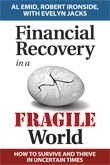Last updated: March 29 2012
Federal Budget delivers surplus by 2015-16
The federal government's Economic Action Plan 2012 is squarely onside to eliminate the deficit by fiscal year 2014-15 ó without introducing draconian budget cuts or new taxes. In fact, Finance Minister Jim Flaherty's budget "remains focused on an agenda that will deliver high-quality jobs, economic growth and sound public finances.î
The deficit ó $24.9 billion for 2011-12 ó will decline by steps over the five years reaching a surplus of $3.4 billion in 2015-16 and $7.8 billion in 2016-17. By that point, federal debt as a percentage of gross domestic product (GDP) will drop to 28.5% ó down from 33.9% in 2010-11 and in line with pre-recession levels. Another telling indicator, program expenses as a share of GDP, will likewise decline to pre-recession levels, hitting 12.7% by 2016-17 from 14.7% in 2010ñ11.
As has been the habit for the past two decades, the feds have based the budget on the input of private sector economists. The March consultation with economists produced growth in real GDP of 2.1% in 2012 and 2.4% in 2013. But as those economists were quick to point out, those projections are not without downside risks. As a result, the government has adjusted the private sector forecast for nominal GDP downward by $20 billion a year over the 2012ñ2016 period. This adjustment for risk, says the federal budget, represents a $3-billion adjustment in fiscal revenues in each year of the forecast.
The budget outlines revenues of $248 billion in 2011-12, a 4.6% increase based on year-to-date results and economic projections. Over the remainder of the forecast horizon until 2016-17, revenues are projected to grow at an average annual rate of 4.7%.
Personal income taxes ó the largest component of budgetary revenues ó will increase by $7.4 billion or 6.5% to $120.9 billion in 2011ñ12. Over the remainder of the projection period, average annual growth is expected to be 5.4%. Corporate income tax revenues are projected to increase by 8.8% to $32.6 billion in 2011ñ12 and by 4.1% annually until 2016-17.
Program spending, coming in at $241.9 billion in this fiscal year, will increase gradually to $268.6 billion in 2016-17. Under the heading of transfers to persons comes elderly benefits, one of the largest government expenses. Comprised of Old Age Security, Guaranteed Income Supplement and Spousal Allowance payments to qualifying seniors, elderly benefits are projected to grow to $50.1 billion over the planning period from $38.1 billion, or about 5.6% a year. This increase, says the budget, is due to consumer price inflation, because benefits are fully indexed, and a projected increase in the seniors' population to 6.0 million from 4.8 million over the time frame.
Major transfers to other levels of government include the Canada Health Transfer (CHT) with a 6% annual escalator and Canada Social Transfer with a 3%-a-year escalator.


